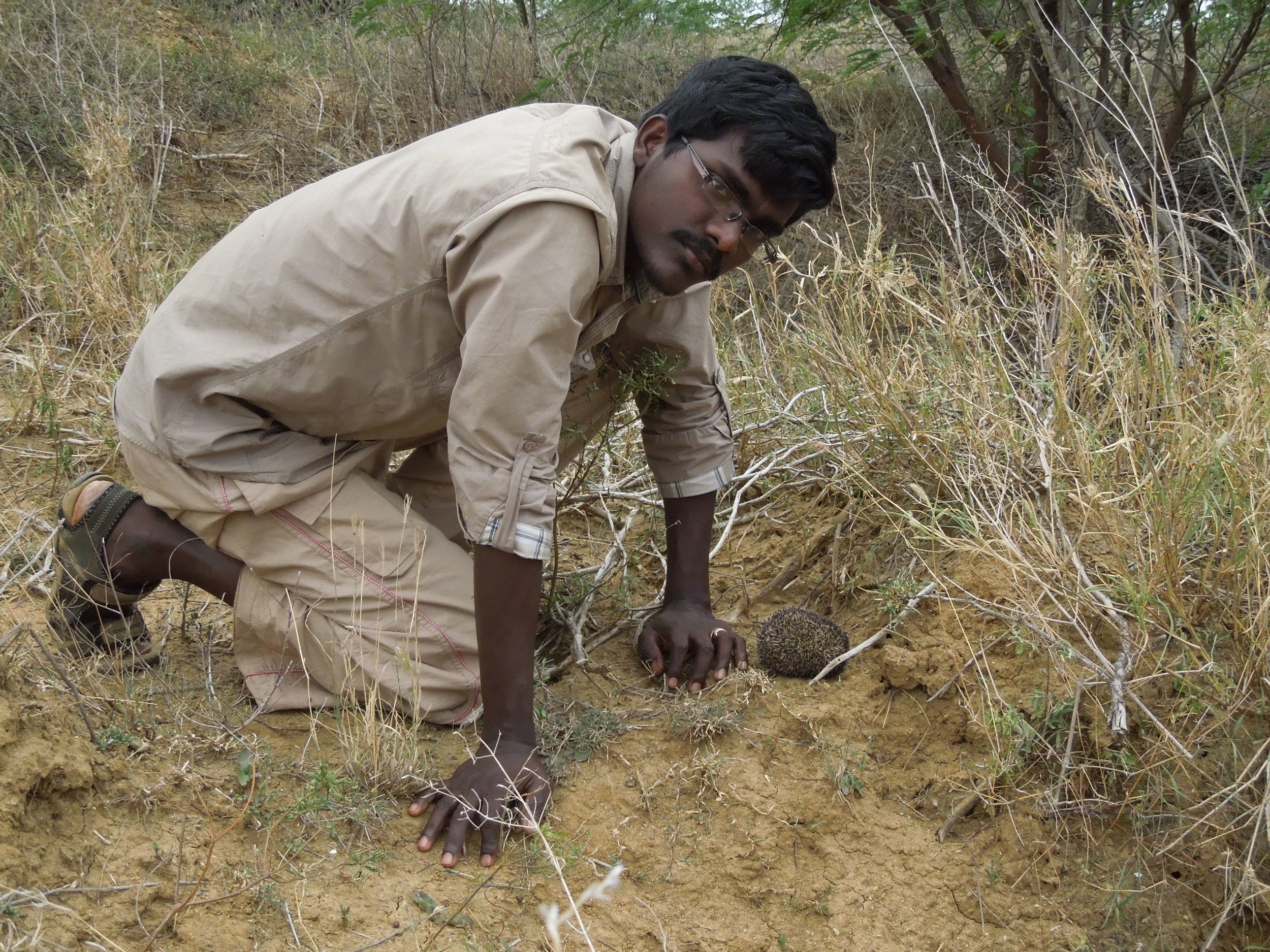Grantee Update: Krishna Pavan Kumar Komanduri
Krishna Pavan Kumar Komanduri is a 2019 Inlaks Ravisankaran Fellowship small grantee. He is studying whether plantations as thermally suitable habitats (TSH) for frogs and how the change of land use alters body temperature and microhabitat selection.
This week he takes us on a journey into the cashew plantations in the Western Ghats of India. He explains how human habitation affects the habitats of amphibians and the hurdles he must cross in order to find a balance between the needs of the farmers of the region and the native biodiversity.
Cashew plantations an abode for amphibians?
Dark and overcast. Like any other day in the Western Ghats during monsoon, it was a typical gloomy day, with a carpet of grey clouds spread across the sky. As I rode my vehicle, passing through agricultural fields peppered with forests and the occasional sprinkling of rain that gently landed on my face, I made my way to meet my field assistant. “Kaka”, as I respectfully call him. It was a reunion of sorts, having last seen him some six months back. We set out to scrutinize cashew plantations as potential sites for my intended research, which was financially supported by the Inlaks foundation as part of their Small Grants program. And so I find myself in Tillari, an unsurprisingly beautiful landscape, recently declared as a ‘Conservation Reserve’, spanning 29.53 km2. Tillari, named after the river that flows through it, lies in Maharashtra’s Sindhudurg district. It is a crucial wildlife corridor connecting the Kali Tiger Reserve in Karnataka to Maharashtra’s Radhanagari Wildlife Sanctuary. Several threatened biodiversity call Tillari their home, and unique habitats such as myristica swamps further accentuate its ecological value and aesthetic magnificence. The landscape also hosts semi-evergreen forests and various plantations such as pineapple, banana, areca nut, rubber, and cashew. Such habitats are termed ‘human modified’ landscapes.
Between 1990-2015 the global protected area cover has increased from 7.7 to 16.3 %. This, in theory, should have proven greatly beneficial to the world’s biodiversity. Unfortunately, however, that hasn’t been the case. Why so? And how so? Species residing within these PA’s are perturbed by disturbances emanating from areas outside yet close to them. The extent to which humans have influenced the world’s biosphere and its consequences on biodiversity therein requires us to integrate such modified landscapes into our conservation strategies and policies. It, therefore, becomes imperative to understand the functioning of ecological processes in these modified systems to optimize management practices that are directed toward securing the ecological well-being of the species. When managed in moderation, these landscapes seek to balance conservation priorities and human necessities by maintaining essential goods and services. In this context, I sought to understand the factors that drive terrestrial anuran (= frogs and toads) persistence in locally owned cashew plantations.
Why anurans? Anurans, salamanders and caecilians, collectively called amphibians, have existed on the earth for nearly 368 million years. They have persisted through all the five mass extinctions the earth has witnessed, one of which brought about the demise of the ‘dinosaurs’. However, in recent times, the world is in the midst of a 6th mass extinction, with the decline of anuran populations worldwide. The IUCN estimates that 40% of the 8250 species of amphibians worldwide are threatened with extinction. Unsurprisingly, anurans are among the world’s most threatened taxonomic groups. Studies point towards several causes, including invasive/alien species, climate change, habitat modification, over-exploitation, and infectious diseases. Loss of habitat, in particular, has accounted for the most prolonged period, dating back to as early as the 1800s, and is acknowledged as the single most important cause of localized amphibian declines.
Most anurans need both water and land to complete their life cycle. Additionally, they also require appropriate levels of moisture, temperature, refuge and food resources. But, when a habitat is modified, these conditions are disrupted, affecting their physiology or the ability to forage, mate and so on. And so, in light of anuran responses to disturbed and unsuitable habitats, understanding their persistence in any given landscape could help assess the environment’s health.
Undertaking this study required me to scout for anurans in marked strips of land, known as transects at night, across a gradient of habitats from forests and forest edges to cashew plantations. The forest edges, in this case, were sacred groves bordering forests as well as cashew plantations. During the surveys, I also recorded information on the microhabitat type, for example, bushes, open ground, leaf litter, and environmental and climatic factors. Additionally, to know if an anuran residing within these habitats would face any nocturnal temperature difference, agar (a gelatinous substance) models carved as a frog and implanted with thermal sensors were used. These are known to mimic the temperature changes experienced by anurans. Our results show that terrestrial anurans in cashew plantations would experience relatively more temperature fluctuations, irrespective of the microhabitat type.
The modification of habitat forces species to inhabit human-modified landscapes, rendering their ability to use such a landscape vital to their existence. When a habitat is modified, the species that adapt to variable conditions (generalist species) tend to prevail more than the species that survive largely in specific conditions (specialist species) and are restricted to only conducive habitats. A similar trend was observed during my study, wherein species such as the common Indian toad (Duttaphrynus melanostictus) and the Indian bullfrog (Hoplobatrachus tigerinus), which adapt to variable temperatures and microhabitats, were found in greater numbers in cashew plantations. Whilst specialist species like the Amboli Leaping frog (Indirana chiravasi) were found more in forests. However, the critically endangered Amboli bush frog (Pseudophilautus amboli) was encountered more in cashew plantations. This might be due to cashew bushes substituting as its microhabitat, and therefore an exception. Interestingly enough, forest edges had a blend of species found in cashew plantations and forests.
These results corroborate the findings of previous works on the subject of amphibian persistence in human-modified landscapes. Even though cashew is one of India’s major cash crops, we lack information on its ecological value. Understanding the conservation value of cashew and other such modified landscapes becomes all the more imperative. Furthermore, it is important to view human-modified landscapes as an ecologically interacting entity in conjunction with their surrounding natural landscapes, particularly in tropical countries such as India, where these habitats are often in close proximity to forests. Such a stance would help find a middle ground where both the farmers’ needs, and the native biodiversity are balanced.









